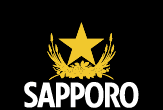
As we noted in our July 2005 blog
Re:Place and the Specificity of Brands, place is becoming critical to the identity, authenticity and uniqueness (or the specificity) of a brand. Place provides an aesthetic counterpoint to the “generic” of the chain. The authenticity of a product, is determined by purity, tradition and the aura of history – all elements that are determined by place and which can both define and bring value to a brand. Yet, brand owners are willing to re/place and subsume identity, determining authenticity only by logo and thereby destroying uniqueness and hence value with an authorised non-specificity - all because, in the short term, it preserves margins and retains profit. To date consumers seem only to willing to go along with this charade.
A case in point is the tendency for domestic beer brewers to buy local brewing licences for international premium brands and then sell them into domestic markets labelled as “imported” brands with imported prices.
Let’s take the case of Sapporo. According to the Sapparo USA website (www.sapporousa.com) the beer has a brand built on distinct place and heritage values, dating back to 1876 with the founding of the Kaitakushi Brewery in Japan. The site says Sapporo's been in the US since 1984 and has established itself as the most popular Japanese beer imported into the US market (all true). Here we need to note the use of the word “imported” because in the case of Sapporo, the beer on the Premium Imported packs which loudly proclaims it is “imported” IS not from Japan but from Canada. Not even the water used in the beer is going to be same in Canada. Just as Sapporo itself makes Guinness beer in Japan for Diageo, it all seems rather incongruous and somewhat a case of a questionable trade practice with some long term implications.
So what’s going on here? We think we’re buying an imported beer with a brand heritage. We think the place of origin is Japan and we think we should be paying more for the specificity of the brand. The problem is that Sapporo, like so many other “imported” beers in the premium category, is engaging in what can only be described as authorised non-specificity, they are counterfeiting themselves.
Do customers care or even bother to read the label?
At DIFFUSION, we pride ourselves on thoroughness, so of course we read the labels. And we think it’s unfair consumers are being asked to pay premium prices for “imported” beer brands brewed domestically. Yet, according to an interview in Japanese Gourmet with Sapporo Beer USA president Mikio Masawaki, Sapporo still shipped over 2 million cases of beer in the US in 2005 and is now the US market leader by a wide margin.
Sapporo is a very simple and powerful example; but we’re finding this trend not just limited to beers, it’s in clothing and accessories, cars and other consumer categories. People are buying what they think is an internationally originated product but which is actually domestically produced or produced outside the place of origin. In the end, what will be the worth of place of origin, of national distinctiveness? What will be the point of difference? What will be the worth of the brand?
We think the idea of brand specificity is being overlooked by both brand owners and consumers. Brand owners need to carefully rethink current brand strategies built on strong customer recognition, derived from place of origin and manufacture. Consumers need to start thinking about why they are paying premium prices for products no longer attached to and manufactured in their place of origin.
What do we see coming? In many cases, consumer backlash against inauthenticity and a return to the type of purchasing behaviour that reinforces and supports genuine national identity and industry. It’s the reason why companies like clothing manufacturer American Apparel (www.americanapparel.net) are thriving. American Apparel now runs the largest garment factory in the United States, employing over 3,000 people at one location in a market where 96 percent of all clothing is imported. Strongly branded by its place of origin, locally manufactured and with sales projected at $400m from its 100 stores and overseas distribution, it proves the case for value in the point of origin.




